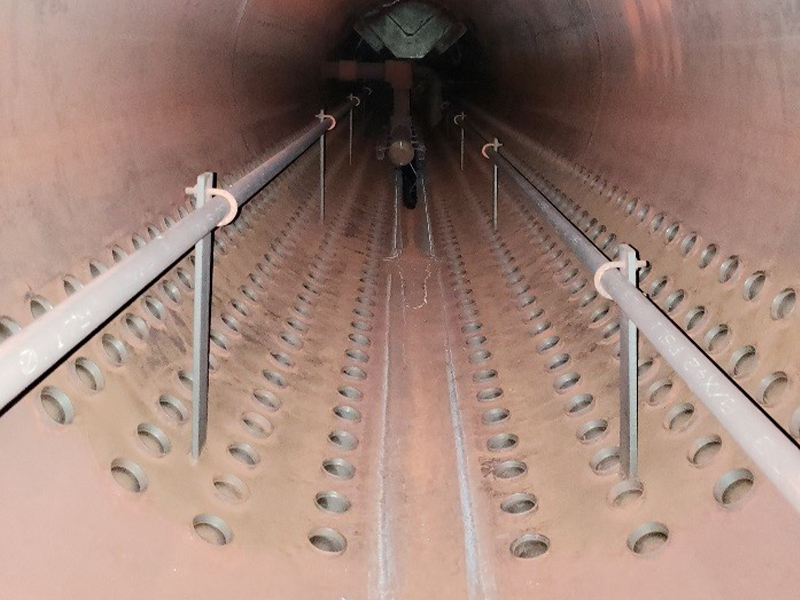A new Midwest dry-mill ethanol plant needed a complete boiler treatment program in place for the initial startup. The facility required a safe and FDA-approved product for potential contact in Distillers’ Dried Grains with Solubles (DDGS) used in animal feed and corn oil. Using efficient chemical feeds with minimal operational maintenance was priority. Additionally, this facility's two boilers had sustaining blowdown issues in the first five weeks of operation. This caused stop-start use of the boiler, intermittent chemical treatment, decreased cycling of boiler water, and a high potential for corrosion. The ethanol plant required a solution to stabilize boiler water control and water quality.
Using our industry experience and expertise, Kurita America representatives combined chemistry, equipment, engineering, and service into a customized solution for the dry-mill ethanol plant.
For an economical and simple boiler treatment plan, this facility committed to a tailored Kurita Cetamine® program from the first day of operation. A typical boiler treatment plan includes four products: Caustic, Return Line Treatment, Oxygen Scavenger, and a Boiler Chemical product. Kurita America offered a single, innovative technology for complete protection: Cetamine V217K, a kosher certified all-organic treatment. Designed to protect the entire installation, Cetamine is composed of film-forming amines that create a hydrophobic protective film. This film, adsorbed on all metal surfaces in the system, creates a continuous barrier between water and metal, effectively inhibiting corrosion without affecting the heat transfer. Cetamine represents the latest standard in boiler water treatment.
Metering pump equipment was installed for improved performance, feeding to an existing injection quill on the lower part of the deaeration tank. Cetamine V217K was dosed proportionally to make-up water at 20-30 ppm undiluted while liquid caustic was also installed as a recommended pH control for ideal Cetamine performance.
To address the boiler blowdown issues, an engineered mechanical fix was proposed by the Kurita America team familiar with this boiler design. With the reduction in boiler blowdown, the ethanol plant was able to lower their water usage and cost.
Online communications software was implemented to allow the service team to immediately receive alerts if the system is experiencing any irregularities. These alerts allow the team to respond promptly and adjust from the site or home via Kurita America eLink.
Since start-up, Kurita America personnel collected samples, advised necessary adjustments, and logged the extensive water quality data of condensate return, boiler, and make-up water. Monthly samples of DDGS and corn oil were analyzed for Cetamine residual with no carry-over.
The Cetamine treatment program proved immediately effective after plant start-up. With the plant up and running, both boilers had consistently low free iron at 85 cycles, condensate return with 8.2-9.5 pH, boiler operation at 11-12 pH, and great Cetamine residual. Consistent feed rates of Cetamine led to cost savings with less product consumption.
Cetamine formed a robust film throughout the system, maintaining impressive corrosion protection especially during system start-ups and lay-ups and with flow accelerated corrosion. Close monitoring of Cetamine treatment prevented significant corrosion during these first weeks with only one instance of total iron above 0.20 ppm in the boilers. With blowdown issues addressed, total iron levels have not exceeded 0.10 ppm throughout the system for more than six months, well below the 0.20 ppm alarm threshold.
After one year of operation, the boiler system passed a mandatory boiler inspection by the state government. Clean boiler drums and condensate receivers were observed, and multiple metal surfaces tested positive for hydrophobicity, an indication of a Cetamine protective film. This film protects metal surfaces even when a boiler is not operating, and there were no iron spikes in the boiler system during start-up the following day.
By using only Cetamine technology and liquid caustic, this facility continues to save on operating and inventory costs associated with a traditional four-chemical boiler treatment program. With the chemical program, equipment, communications, and engineering solutions managed as one, the dry-mill ethanol plant maintained excellent results, proving the solution to be a safe and effective integrated program.

